
Satu Mare County is a county (județ) of Romania, on the border with Hungary and Ukraine. The capital city is Satu Mare.
The Kingdom of Romania, under the rule of King Carol II, was initially a neutral country in World War II. However, Fascist political forces, especially the Iron Guard, rose in popularity and power, urging an alliance with Nazi Germany and its allies. As the military fortunes of Romania's two main guarantors of territorial integrity—France and Britain—crumbled in the Fall of France, the government of Romania turned to Germany in hopes of a similar guarantee, unaware that the then-dominant European power had already granted its blessing to Soviet claims on Romanian territory, in a secret protocol of 1939's Molotov–Ribbentrop Pact.

Satu Mare is a city with a population of 102,400 (2011). It is the capital of Satu Mare County, Romania, as well as the centre of the Satu Mare metropolitan area. It lies in the region of Maramureș, broadly part of Transylvania. Mentioned in the Gesta Hungarorum as castrum Zotmar, the city has a history going back to the Middle Ages. Today, it is an academic, cultural, industrial, and business centre in the Nord-Vest development region.
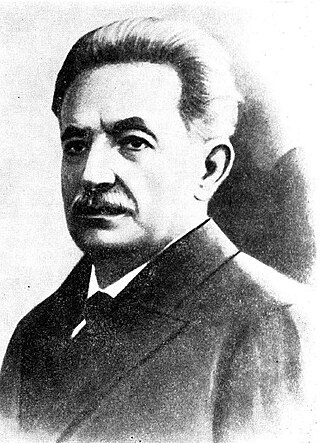
Ioan Slavici was a Romanian writer and journalist from Austria-Hungary, later Romania.
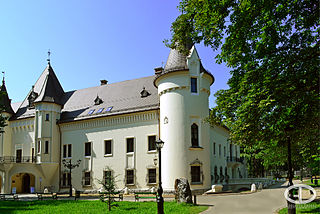
Carei is a city in Satu Mare County, northwestern Romania, near the border with Hungary. The city administers one village, Ianculești.
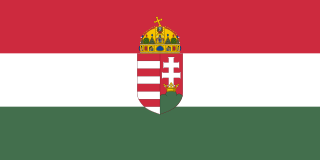
Northern Transylvania was the region of the Kingdom of Romania that during World War II, as a consequence of the August 1940 territorial agreement known as the Second Vienna Award, became part of the Kingdom of Hungary. With an area of 43,104 km2 (16,643 sq mi), the population was largely composed of both ethnic Romanians and Hungarians.

The Romanian Land Forces is the army of Romania, and the main component of the Romanian Armed Forces. Since 2007, full professionalization and a major equipment overhaul have transformed the nature of the Land Forces.
The Treznea massacre occurred in the village of Treznea, Sălaj in north-western Transylvania on 9 September 1940, in the immediate aftermath of the Second Vienna Award, when Romania ceded Northern Transylvania to Hungary. The massacre was perpretated by Hungarian Army troops with aid from some locals; 93 ethnic Romanians and Jews were killed.
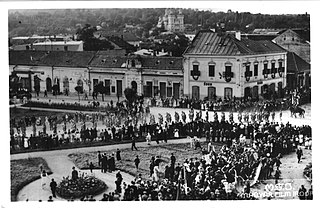
The events of the Ip massacre escalated in the early hours of 14 September 1940, in Ipp,, Northern Transylvania. After two Hungarian soldiers died there in an accidental explosion, rumors spread that they had been killed by Romanians. After another incident the Royal Hungarian Army, influenced by the rumor, indiscriminately massacred around 150 ethnic Romanians in the nearby locations and surrounding areas.
The Fourth Army was a field army of the Romanian Land Forces active from the 19th century to the 1990s.
Gavril Olteanu (1888–1946) was a leader of a Romanian paramilitary militia group, part of the Maniu Guards during World War II, which became notorious for the killing and deportation of ethnic Hungarians in Transylvania.
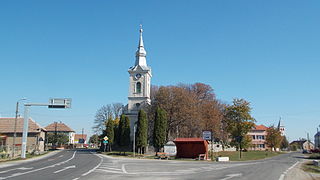
Pișcolt is a commune of 3,285 inhabitants situated in Satu Mare County, Crișana, Romania. It is composed of three villages: Pișcolt, Resighea (Reszege) and Scărișoara Nouă (Piskolcliget).

Gheorghe Manoliu was a Romanian major general during World War II.

Gheorghe Avramescu was a Romanian Lieutenant General during World War II. In 1945, he was arrested by the NKVD on the Slovakian front and died in custody the next day.
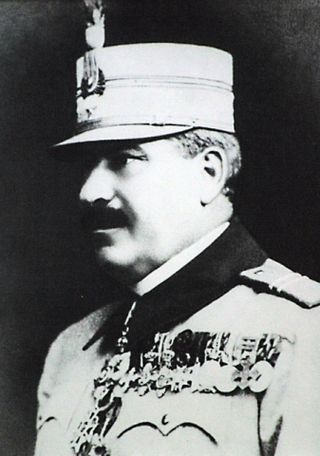
Traian Moșoiu was a Romanian general during World War I and the Hungarian–Romanian War. He held the posts of Minister of War in the Alexandru Vaida-Voevod cabinet, Minister of Communications and of Industry and Commerce in the Ion I. C. Brătianu cabinet.
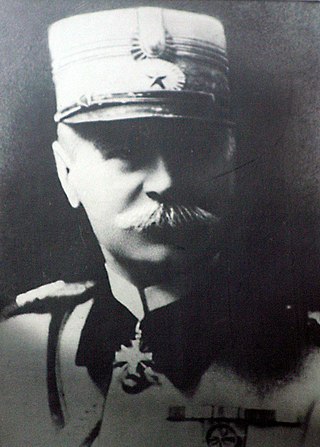
Gheorghe D. Mărdărescu was a Romanian army major general during World War I, a commander during the Hungarian–Romanian War of 1919, and Minister of War from 1922 to 1926.
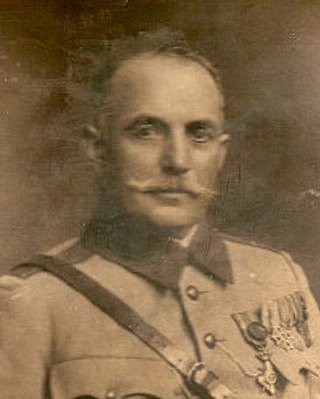
Constantin Dumitrescu was a Romanian major general.

The Trianon Treaty Day is a public holiday in Romania celebrated every 4 June to commemorate the signing of the Treaty of Trianon in 1920. The holiday was first proposed in 2015 by the Romanian politician Titus Corlățean and subsequently promulgated on 18 November 2020 by President Klaus Iohannis.
Events from the year 1944 in Romania. The year was dominated by the Second World War. King Michael led a coup d'état during the year and Romania left the Axis powers and joined the Allies. The Romanian army won victories against German and Hungarian troops.

Clubul Sportiv Municipal Victoria Carei, commonly known as Victoria Carei, is a Romanian football club based in Carei, Satu Mare County and currently playing in the Liga III, the third tier of the Romanian football league system, following their promotion from the Liga IV – Satu Mare County in the 2021–22 season. Founded in 1923 Victoria Carei played sixteen seasons in Liga II and thirty-seven seasons in Liga III. Their highest league finish is third, in the 1935–36 season of Divizia B.
















